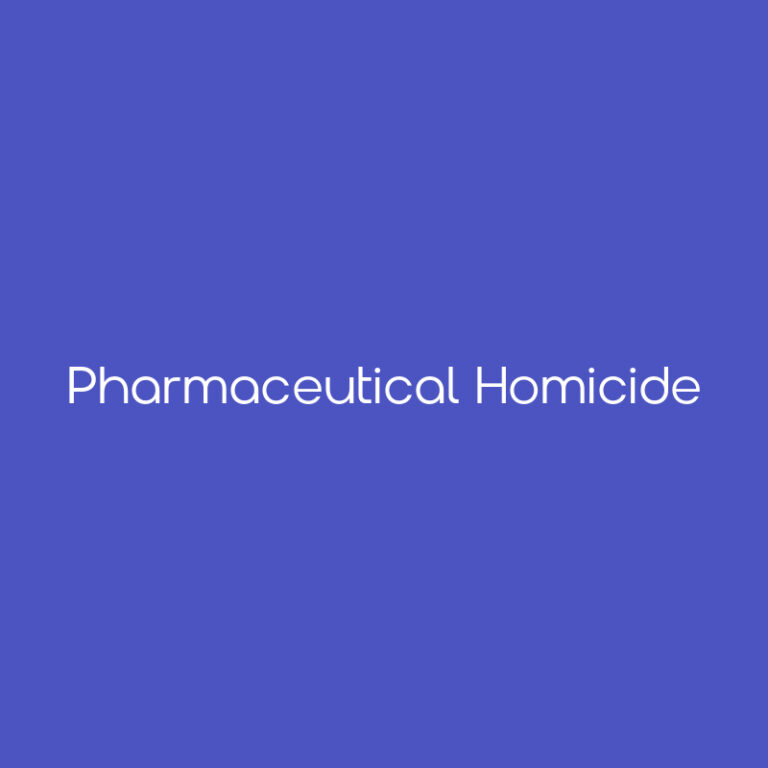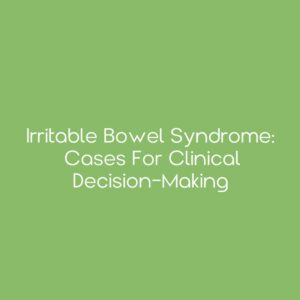Pharmaceutical Homicide

Pharmaceutical Homicide
Explore the fascinating (and often disturbing) reality of pharmaceutical homicide through a comprehensive review of notable cases and their corresponding legal implications in pharmacy law. Delve into the complex dynamics surrounding the intentional misuse of pharmaceuticals in healthcare settings and beyond. Learn how pharmacists play a crucial role in detection, prevention, and prosecution, while gaining insights into forensic pharmacy practices aimed at safeguarding public health. This course navigates through the intricate intersections of law, ethics, and pharmaceutical science to equip learners with the knowledge and tools necessary to mitigate the risks associated with pharmaceutical-related crimes.
Upon successful completion of this knowledge-based CPE course, pharmacists should be able to:
1. List the elements of a criminal act.
2. Review the different types of illegal acts that are punishable through criminal law enforcement.
3. Compare the concept of “mass murder” with the concept of “serial killing.”
4. Explain the significance of direct evidence and circumstantial evidence.
5. Discuss the use of evidence in a criminal trial, including the challenges prosecutors face in providing sufficient evidence to support conviction.
6. Describe how criminal investigations can be conducted to provide evidence today of what has happened in the past.
7. List the responsibilities of a forensic pharmacy consultant.
8. Identify the qualifications that must be established for a forensic pharmacy consultant to qualify as an expert witness.
9. Review the proposed testimony of a pharmacist expert witness to determine whether it meets the requirements of relevance and reliability.
10. Describe situations in which healthcare professionals have used pharmaceutical products as murder weapons in a healthcare setting.
11. Explain the modus operandi of healthcare professionals who murder patients entrusted to their care.
12. Discuss strategies that can be developed to prevent murder by medication within a healthcare institution.
13. Summarize the epidemiology of health care homicide.
14. Recognize the challenges in the detection of health care homicide.
15. List indicators that may point to a health care murderer.
16. Explain how potentially lethal pharmaceutical products can be removed from the institutional setting and used in pharmaceutical homicide.
17. Identify steps that can be taken to reduce the occurrence of drug-facilitated crimes.
18. Define the pharmacist’s role in preventing unauthorized removal of medications from a healthcare facility.
19. State the pharmaceutical products that are toxic at supratherapeutic doses and can be used as murder weapons.
20. Describe how pharmaceutical distribution systems allow access to pharmaceutical products for criminal purposes.
21. Discuss the types of circumstantial evidence from investigations of suspicious deaths that can be used to prosecute pharmaceutical homicide.
22. Review the historic role of pharmacies as the source of pharmaceutical products used by healthcare professionals to poison family and friends.
23. List the steps that are taken in Risk Evaluation and Mitigation Strategies to reduce the potential harm of medication use.
24. Summarize legal case studies in which healthcare professionals have caused intentional harm to family and friends.
25. Discuss the legal responsibility to screen controlled substance prescriptions.
26. Recognize factors that may indicate a prescription has been issued for other than a legitimate medical purpose or outside standard of practice.
27. Outline strategies to reduce drug diversion while meeting the needs of patients in pain.
28. Describe the pharmacist’s responsibility for maintaining the quality of drug products in stock.
29. Identify ways in which pharmacists can detect and prevent patient harm from pharmaceutical product defect.
30. Explain the circumstances that drug products may be considered defective and unreasonably dangerous, leading to liability for patient death.
31. Review the FDA standards for new drug approval.
32. Describe FDA regulatory priorities in the oversight of marketed unapproved drugs.
33. Name the types of criminal activities that may violate federal drug laws requiring the approval of a new drug before entering interstate commerce.
34. Articulate the basic principles that support effective patient care at the end of life.
35. Explain the difference between assisted suicide and euthanasia.
36. List the ways in which pharmacists may become professionally involved with physician assisted dying.
37. Define the role of a state board of pharmacy in the prevention of unintended deaths due to the improper use of pharmaceutical products.
38. Describe the grounds on which a board of pharmacy can base disciplinary action following the fatal use of a pharmaceutical product.
39. State the elements of due process required of a board of pharmacy in the conduct of administrative disciplinary action.
40. Discuss the elements of a malpractice case against a pharmacy or pharmacist.
41. Explain the rationale for allowing an award of punitive damages against a pharmacy or pharmacist in a malpractice case.
42. Review situations in pharmacy practice that can be interpreted as recklessly disregarding patient best interests.
43. List the types of pharmacy errors that may lead to criminal liability.
44. Discuss the justifications for criminal liability and the criticisms of criminal liability.
45. Summarize the steps that can be taken to reduce exposure to criminal liability for error.
David B. Brushwood, R.Ph, J.D.
Senior Lecturer, The University of Wyoming School of Pharmacy
Pharmacy Law Content Developer, CEimpact
David B. Brushwood has no relevant financial relationships with ineligible companies to disclose.
This is not an ACPE-defined Certificate Program; learners who complete this course will receive ACPE CPE credit but will not be awarded completion of a Certificate Program.
Course fee includes course, course materials, and CPE credit submission to CPE Monitor.
Initial Release Date: May 6, 2024
Planned Expiration Date: May 6, 2027
This program is provided for educational purposes. CEimpact is not a law firm and does not provide legal advice of any kind. For legal advice, please contact a licensed attorney.
Copyright 2024, CEimpact. All Rights Reserved. Any reproduction of this course without express permission is strictly forbidden.
![]() CEImpact is accredited by the Accreditation Council for Pharmacy Education as a provider of continuing pharmacy education. Obtain CPE credit by completing the course, followed by the exam and evaluation (if applicable). Once successfully completed, your course will appear in your Completed Courses tab. Access your CPE statement of credit at www.MyCPEMonitor.net.
CEImpact is accredited by the Accreditation Council for Pharmacy Education as a provider of continuing pharmacy education. Obtain CPE credit by completing the course, followed by the exam and evaluation (if applicable). Once successfully completed, your course will appear in your Completed Courses tab. Access your CPE statement of credit at www.MyCPEMonitor.net.
¹CEImpact provides you with two (2) opportunities to complete the exam. The learner will not receive CPE credit after two failed attempts.
Additional information
| Duration | 15h 0m |
|---|---|
| Topic Designator | Law |
| ACPE | Yes |
| ACPE Topic | 03 Law |
| Role | Pharmacist |
| Media-Type | Written |
| Release Date | 5/6/24 |
| CEUs | 1.5 |
| ACPE Number | 0000-0107-24-140-H03-P |



![Advances in ADHD Treatment [Pharmacist]](https://www.ceimpact.com/wp-content/uploads/course-images-solidbg/2022/06/pharmacist/4547-300x300.jpg)
